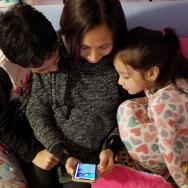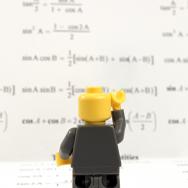By the time they reach kindergarten, children from disadvantaged backgrounds may already be behind in math. But identifying which students need help—and in what areas—can be challenging for teachers, who often lack knowledge of each child’s baseline skills.
A new study from the University of Chicago offers a potential solution: By assessing a variety of specific skills one-on-one every 10 weeks, teachers can bring students up to speed more effectively—helping to reduce the achievement gap.
Published Oct. 26 in the Proceedings of the National Academy of Sciences, the study was led by Profs. Stephen Raudenbush and Susan Levine, and represents the latest in decades of innovative early childhood research at UChicago.
To conduct the study, Raudenbush, Levine and their colleagues assembled a team of researchers that included statisticians, psychologists and curriculum experts. The team determined what skills to measure, as well as their statistical validity.
The study assessed both numerical skills, such as counting and operations, and spatial skills like shape recognition. Simple tasks were designed for each specific skill: To measure mental rotation, for example, researchers asked children to identify an animal facing a specified direction.
The research team also wanted to ensure that the system they developed would fit the classroom, helping teachers interpret data and build better instructional strategies—an example of how UChicago scholars turn rigorous research into practice.
“We wanted the assessment instruction system to be both usable and useful—usable in the sense that teachers can do it, and useful in that it guides their practice and is instructionally valuable for children,” said Levine, the Rebecca Anne Boylan Professor in Education and Society and a leading expert on math development in young children.
The new study included 24 teachers in the experimental trial and 25 in the control group. The results were striking: By iteratively assessing students’ math skills, tailoring subsequent teaching, and reassessing over the course of the year, children in the experimental group gained far more knowledge than children in the other classrooms. For students in the experimental group, the math achievement gap closed by about 40%.
“It was as if the kids in the experimental group had been in school for about three months longer than the kids in the control group,” said Levine.
Surprisingly, the verbal comprehension skills of children in the treatment group also improved significantly as compared to the control group, suggesting that tailored teaching can benefit students in multiple ways, according to Raudenbush, who chairs UChicago’s Committee on Education and has written extensively on educational inequality.
While the system requires teachers to spend some time with students one-on-one, Raudenbush said it shouldn’t place an undue burden on teachers. The assessments were designed to be conducted as quickly as possible, and only need to happen three times during the academic year.
“Making the assessment as efficient as possible is key,” said Raudenbush, the Lewis-Sebring Distinguished Professor of Sociology. “Having an adaptive set of items to cover at every assessment maximizes the amount of information that teachers can get each time.”
Once students have been assessed, it’s easier to place them in groups where they can work together on activities that advance the skills they lack.
By improving math proficiency early, Levine said, the system may also help reduce math anxiety for students later on. Her previous research has shown that being anxious about math can cause students to perform poorly. However, the assessments in the current study are not intimidating, like a test: They work instead like small games.
If taking the assessments can help level the playing field for students as they head into kindergarten, some students might be less likely to fall behind later on.
While the study results are promising, the authors say more work remains to be done. A large effectiveness trial is planned with dozens of teachers—who will be specially trained—and hundreds of students in the San Francisco Bay Area’s Kidango network of preschools to validate the results and ensure feasibility on a large scale.
Preschools and elementary schools must also coordinate, so that any gains students make through the new system are not lost as they advance through kindergarten and beyond, the authors say.
“Part of Susan’s genius—and that of the whole team—is figuring out how to identify the very specific skills that constitute the knowledge gaps between kids of different backgrounds,” Raudenbush said. “I’ve always found it heartening to learn that those are skills that can be learned by any normally developing child, if students just get the right input at the right time.”
This work represents a collaboration across departments at the University of Chicago. Co-authors include Susan Goldin-Meadow, the Beardsley Ruml Distinguished Service Professor in the Departments of Psychology and Comparative Human Development; Debbie Leslies, the director of education outreach, curriculum development and early childhood initiatives at UChicago STEM Education School Support Services; and Marc Hernandez, the founding director of NORC’s Early Childhood Research and Practice Collaborative.
The project director was Janet Eisenband Sorkin, and research was carried out in part by Cristina Carrazza, a PhD student in the Levine Lab.
Citation: "Longitudinally adaptive assessment and instruction increase numerical skills of preschool children," Raudenbush et al., Proceedings of the National Academy of Sciences, Oct. 26, 2020. DOI: 10.1073/pnas.2002883117
Funding: Heising-Simons Foundation

